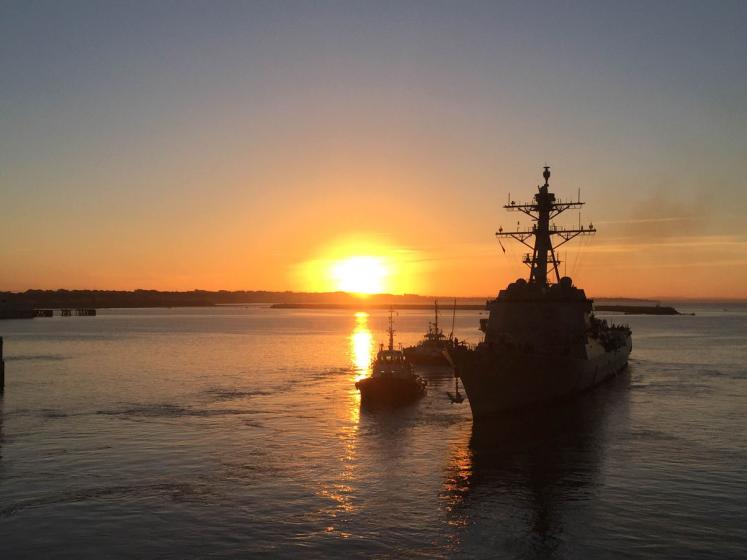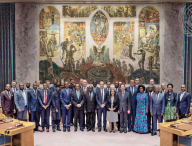Last week, I attended the 10th General Conference of the Council for Security Cooperation in the Asia-Pacific (CSCAP) in Ulaanbaatar, Mongolia. Established in 1993, CSCAP stands as one of the most prominent and inclusive Track II security dialogues in the region, consisting of 20 member committees and around 1,000 individual members. The informal mechanism brings together academics, researchers, and officials from nearly all the countries in the Asia-Pacific, including the United States, China, Russia, and North Korea, plus the European Union. CSCAP activity centers on its Study Groups, currently focused on issues such as energy security, preventive diplomacy, and non-proliferation and disarmament, which often feed into Track I processes such as the ASEAN Regional Forum.
The theme of this year’s conference, held biennially, was “Confidence Building in the Asia-Pacific: The Security Architecture of the 21st Century.” The sessions addressed the uncertainty that characterizes the security environment in the region in light of three factors: 1) the lingering absence of a multilateral security regime, 2) the shifting power dynamics in the Asia-Pacific, and 3) the range of pressing security challenges faced by states.
1. The security order in the Asia-Pacific is characterized by a hodgepodge of alliances, multilateral arrangements, and ad-hoc cooperation mechanisms. While one panelist suggested that such overlap can help to advance strategic cooperation, most others – implicitly or explicitly – advocated for a more coherent security framework. A recurrent theme was the need to address the trust deficit that remains in the region. Many highlighted the value of cooperation on soft, non-traditional security issues such as cybersecurity and nuclear safety. It would spark a capacity-building process that creates stronger institutions overall.
For now, ASEAN and ASEAN-led arrangements continue to dominate the institutional landscape in the region. Some panelists argued that ASEAN could offer more in security affairs, taking a comprehensive European Union-like approach. But the ability of ASEAN to expand its domain remains circumscribed by its membership composition, organizational structure, and strong adherence to the principles of sovereignty and non-interference. A few participants directly questioned the sustainability of ASEAN centrality, especially in light of developments in great power politics.
2. The impact of growing Chinese assertiveness in the region was apparent just last week, with the United States authorizing a naval patrol in disputed territory in the South China Sea. While many conference participants rejected the possibility of direct conflict between the US and China, the consequences of shifting global power dynamics filtered into a host of discussions. This included the intensification of competition in terms of security frameworks, with China preferring the more narrowly-composed ASEAN Plus Three forum and the US espousing the more inclusive East Asia Summit; and economic policies, with China’s belt and road initiative, Russia’s shift towards Eurasia, and the recently announced US-led Trans-Pacific Partnership.
The management of great power rivalries was a point of emphasis for the other states represented at the conference. They highlighted the potential of their countries to play bridging roles in a number of processes, with Australia’s Asia-Pacific Community, Japan’s East Asian Community, and South Korea’s Northeast Asian Peace Cooperation Initiative all cited as examples. ASEAN participants stressed the value of confidence-building measures in volatile situations in the East and South China Seas, and of engaging both the US and China even while advocating greater regionalism. Still, at least one participant acknowledged political realities: “the rules of the game are often forged outside institutional design.”
3. The proceedings underscored the tremendous breadth of challenges present in the region. The standoff over North Korea’s nuclear program persists, with recent provocations pushing inter-Korean relations to the brink. The East and South China Seas, besides being the sites of several territorial disputes, are also hotbeds for a number of maritime crimes, including piracy, human trafficking, and arms and drugs smuggling. Continued economic development is dependent upon reliable access to energy sources; China’s economic slowdown could have debilitating effects as well. Meanwhile, the region has become the most natural disaster-prone region in the world, victim to over 40 percent of reported natural disasters from 2004 to 2013.
The scope of these issues – individually and in tandem – demands a more coherent and unified response. Participants called not only for more dialogue across each of these fronts, but for “a deliberate move to consolidate and coordinate” existing processes. They also specifically proposed mechanisms that would more effectively settle maritime disputes, codes of conduct in maritime and air domains in crisis management situations, and the expansion of disaster relief exercises to enhance practical military-to-military cooperation.
The fact that Ulaanbaatar played host to this year’s General Conference is no accident. Under President Tsakhiagiin Elbegdorj, Mongolia has engaged in a determined multilateralism, serving as a microcosm of the conference theme. It was revealed that Ulaanbaatar hosted secret Track 1.5 meetings between North Korea and the US in May 2014; it also recently served as an intermediary in talks about the abduction of Japanese citizens. At a broader level, Elbegdorj’s Ulaanbaatar Dialogue initiative seeks to address the trust deficit in Northeast Asia through the discussion of less divisive issues such as economic cooperation, environmental concerns, and non-traditional security threats.
There is no panacea for the myriad challenges faced by the countries in the Asia-Pacific. As underscored by the conference, the dynamism and complexities of the security environment only reinforce the critical importance of multilateral dialogue and cooperation moving forward. After all, the future of peace and security in the region will have reverberations around the globe.
Suggested citation: Wilfred Wan., "Securing the Asia-Pacific: A Report From the CSCAP General Conference," UNU-CPR (blog), 2015-11-03, https://unu.edu/cpr/blog-post/securing-asia-pacific-report-cscap-general-conference.




